Syrian architects visited and examined Crac des Chevaliers, a Crusader castle damaged during the five-year-long Syrian civil war in the Homs province. This 11th-century fortress is going to be restored along with other historical monuments.
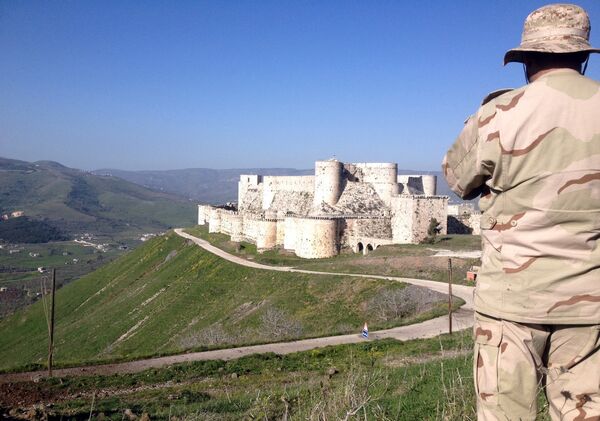
The castle’s name is translated as "knights’ fortress". It is one of the most famous Crusader-era monuments.
Above: A government soldier looks out over the renowned Crusader castle Crac des Chevaliers near the Syria-Lebanon border after forces loyal to Syria's President Bashar al-Assad seized the fortress on March 20, 2014.
Above: A government soldier looks out over the renowned Crusader castle Crac des Chevaliers near the Syria-Lebanon border after forces loyal to Syria's President Bashar al-Assad seized the fortress on March 20, 2014.

The fortress sits atop a 650-meter cliff.
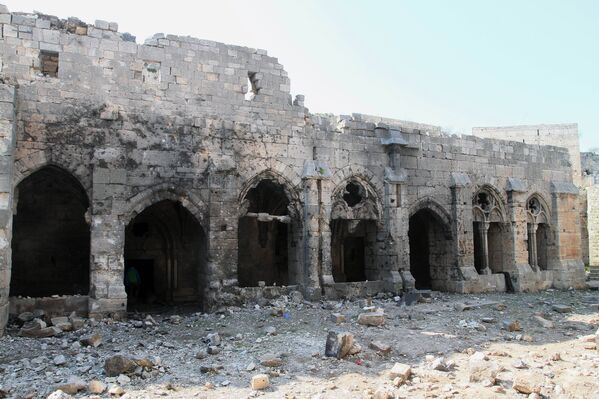
3/14
© AP Photo
Crac des Chevaliers holds a strategic position overlooking the sole road leading from Antioch on the Orontes to Beirut and the Mediterranean Sea.

4/14
© AP Photo / Dusan Vranic
This castle, which once belonged to the Knights Hospitaler, became known as an unassailable stronghold.
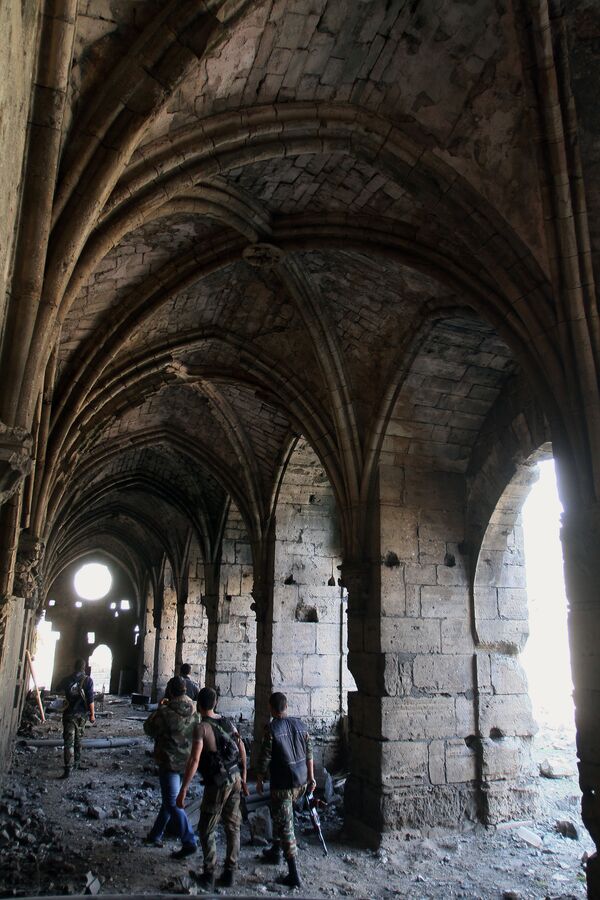
5/14
© AP Photo
It was a Kurdish fortress which came under the control of knights during the First Crusade.
Above: Syrian troops walk on a corridor of the Crac des Chevaliers as they take reporters on a tour a day after Syrian troops ousted rebels from the castle located near the village of Hosn, Syria, Friday, March 21, 2014.
Above: Syrian troops walk on a corridor of the Crac des Chevaliers as they take reporters on a tour a day after Syrian troops ousted rebels from the castle located near the village of Hosn, Syria, Friday, March 21, 2014.
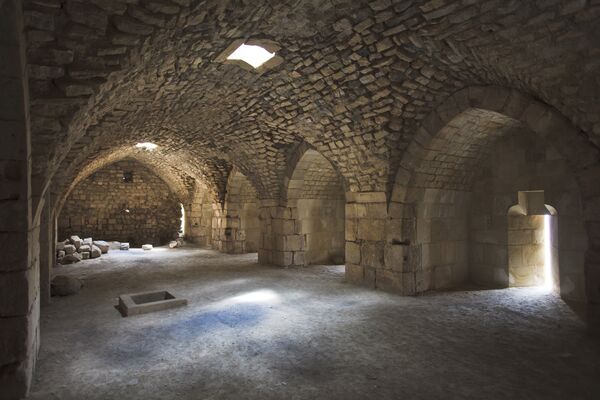
In 1142, Count of Tripoli Raymond II handed the castle to the Order of Knights of the Hospital of Saint John of Jerusalem.

The knights turned the stronghold into an unassailable fortress with walls 3-30 meters thick.
Above: Experts gather as they discuss the restoration process of the Crusader castle of Crac des Chevaliers, in Homs province, Syria, May 24, 2016.
Above: Experts gather as they discuss the restoration process of the Crusader castle of Crac des Chevaliers, in Homs province, Syria, May 24, 2016.
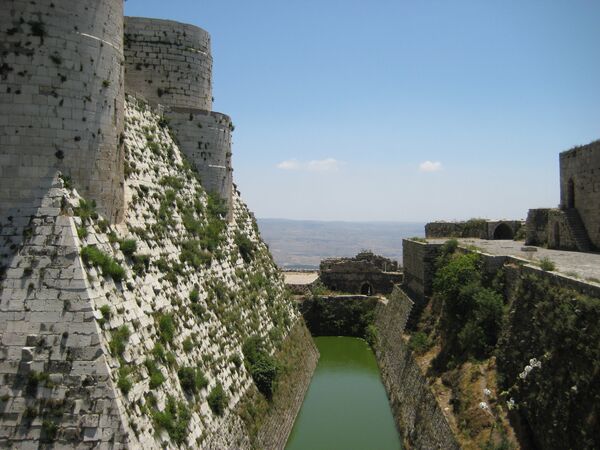
Some rooms were built inside the rocks which helped hold out during long sieges.
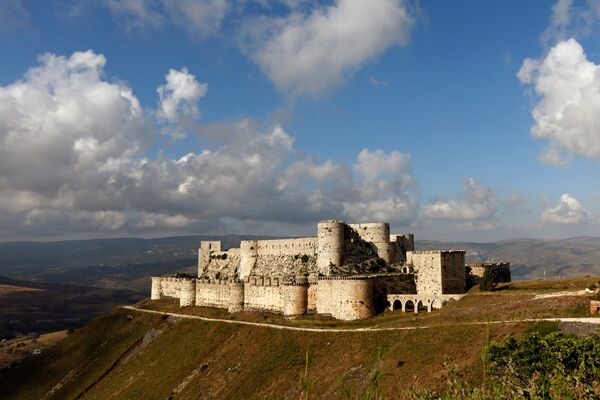
A string of earthquakes in the 12th-13th centuries damaged the castle and it was renovated.
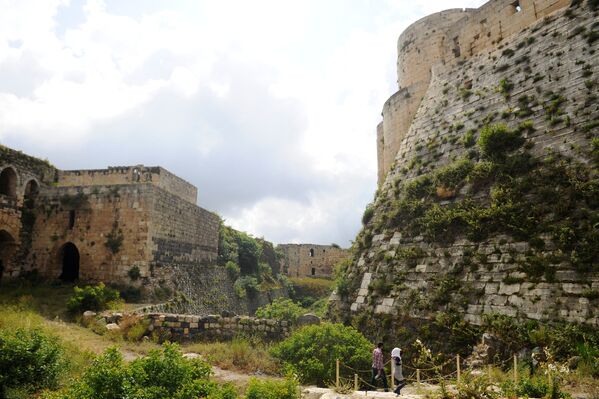
Attackers undertook multiple attempts to capture Crac des Chevaliers, but very few, the most cunning ones, were crowned with success.

In 1188, Sultan Saladin’s army was standing at the gates of the castle. The Arabs took the fortress’ Castelan hostage and forced him to order the garrison to open the gates. He did it in Arabic but then in French ordered to fight to the bitter end.
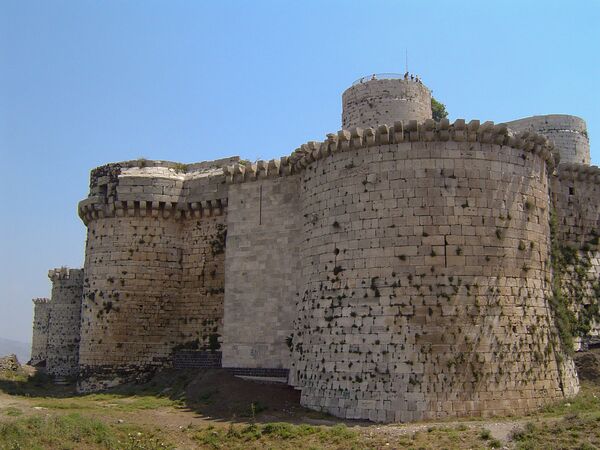
In 1271, Sultan Baibars forged a letter purportedly written by the Hospitallers' Grand Master calling on the knights to surrender, and captured the fortress after a 36-day-long siege.
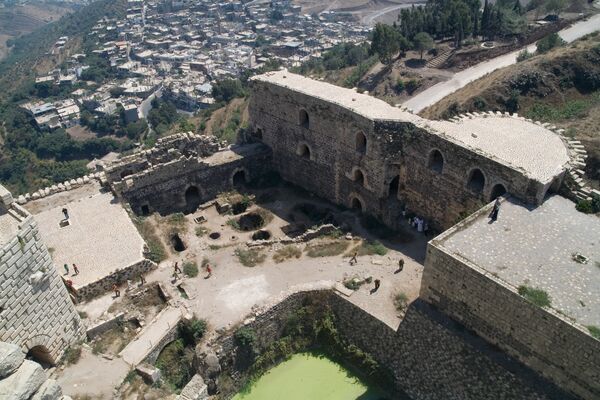
Lawrence of Arabia described Crac des Chevaliers as “perhaps the best preserved and most wholly admirable castle in the world.”
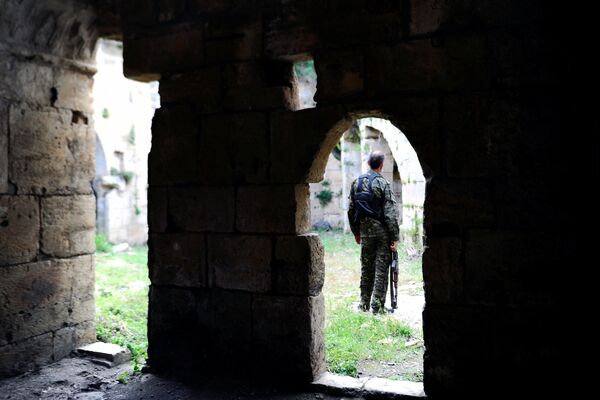
The government forces flushed out militants from the castle in March 2014.
Above: A Syrian army soldier stands guard inside the Crusader castle of Crac des Chevaliers, in Homs province, Syria, May 24, 2016.
Above: A Syrian army soldier stands guard inside the Crusader castle of Crac des Chevaliers, in Homs province, Syria, May 24, 2016.

